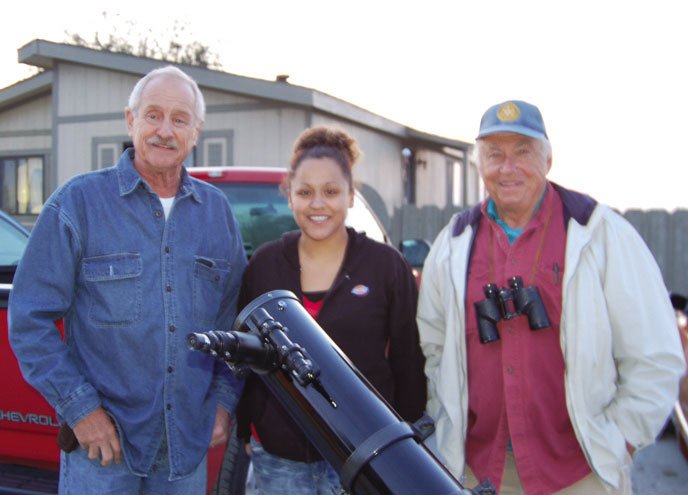Compared to the rest of the year, the spring and early summer
skies seem to be somewhat void of stars.
Compared to the rest of the year, the spring and early summer skies seem to be somewhat void of stars. For if it weren’t for the constellations of Leo and the Big Dipper, the sky would have an almost empty look. There is actually a reason for this.
The stars we see in the skies are in the Milky Way, but the further away you get from the body of our galaxy, the fewer stars you see. The Milky Way is really a huge pancake of stars, now lying almost flat near the horizon, where you have too much haze, light and other low lying obstructions to be able to see anything with clarity. Actually, it is the Earth that has turned to a position where you are looking straight out of the pancake. So there are fewest stars above you.
Constellation of the month
But you will see one very bright star right in the middle as you look straight up: Arcturus. You will know which one it is because it has a slight yellow or orange color to it.
If it can’t be found, there is another way. Find the Big Dipper. You will notice that its handle is somewhat curved. Just imagine this curve continuing on south and it will lead you right to Arcturus.
Arcturus is the main star in the constellation Bootes. Bootes means “a man who tends a herd of cows.” So the constellation is called “The Herdsman.” I’m not certain how they came up with this name, as it doesn’t look like a cowboy herding cows around the sky to me. But it has always looked like some kind of a balloon, with Arcturus being the wicker basket below.
You take a look at it and see what you come up with – I bet it won’t be a cowboy.
n n n
I received a call from Rotarian Kym DuPont the other day. She has a fairly new telescope that she does not use and would like to donate it to the Chamberlain’s Children’s Center. She was wondering if I could present it to the center, along with San Juan Bautista Rotary President Jim Sleznick, set it up and show them how to use it.
Being president of the Hollister Rotary, I thought that was a great idea. So Jim, his wife Gayle and I met at the facility and had a great time showing the children Venus and Saturn. The orange-colored Moon rose over the horizon and we looked at that too.
After about an hour and a half we turned over the telescope to the center and went on our way. The children seemed to have a good time, so I hope they make good use of it.
Last month I had the great opportunity, once again, to visit Miss Carpenter’s fifth and sixth grade students at Tres Pinos Elementary School. We discussed the different phases of the Moon as it revolves around the Earth.
I really enjoy being there with the students, as they reacted like sponges, soaking up the new information. And I must say, I think I walked away learning more than the students did. Miss Carpenter is just the best. She let me take over the class as if I knew what I was doing. As inept as I was during my educational period, I can’t imagine anyone letting me take over their classroom, certainly not to teach anything.
But it was fun and I think the students enjoyed it as well. I felt special when at the end of my little talk one of the students raised their hand and asked: “Are you going to come back again?” Wow, I thought to myself. I had prepared hard for this class, and one simple sentence from that student made it all worthwhile.
Thanks to all the students and Miss Carpenter at Tres Pinos School. I do hope they ask me to come back again. Clear skies.
David Baumgartner is in local real estate and is an avid amateur astronomer. His Sky Watch column appears monthly.














